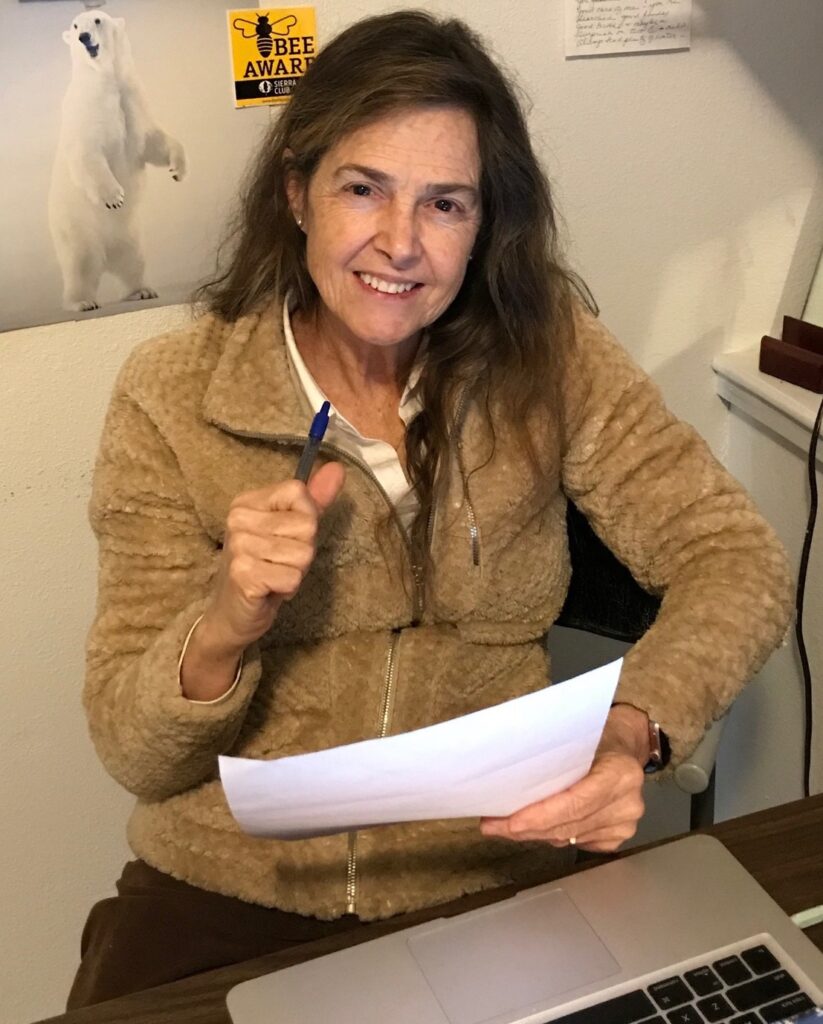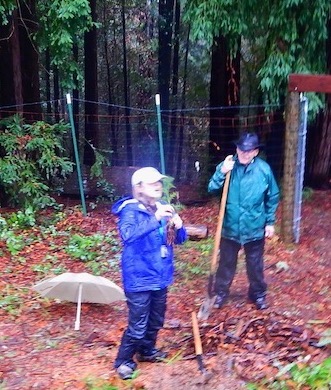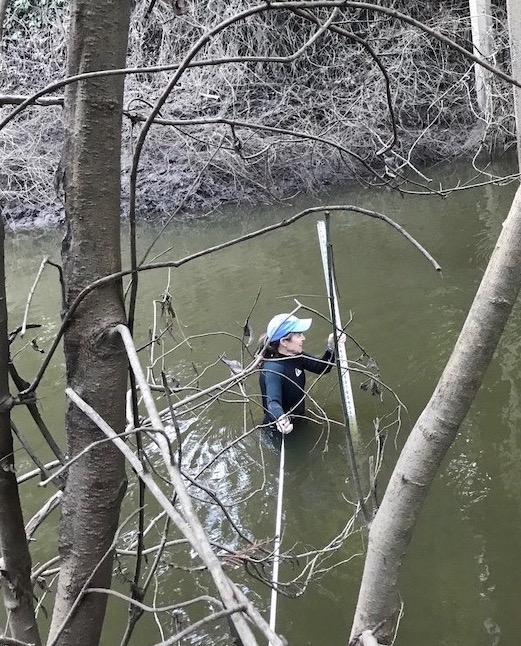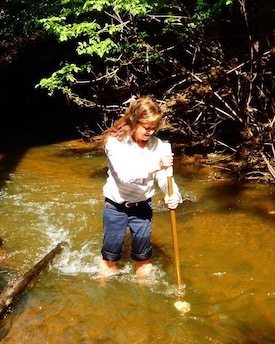

By the time she turned 25, Kimberly Burr had lived in at least ten places. Growing up as an “Air Force brat,” she moved frequently: Alabama to Maine, England to Germany, California to Florida, Colorado to Wyoming. “There were benefits, like learning to make new friends and having opportunities to reinvent yourself, but it was painful to leave old friends and pets behind.”
Kimberly had studied international affairs and diplomacy at the University of Colorado and the University of Wyoming, with the goal of becoming a diplomat. But her life took a different turn. While in grad school, she’d started the first Amnesty International chapter in Wyoming. She decided to move to the Bay Area, as AI had an office in San Francisco. “My brother was living in Sonoma County, so it was a good base for me.”
Life in California
Kimberly began working with non-profits, had her first taste of environmental activism, fell in love – and eventually found herself drawn to the most rooted things on the planet.
In 1990, she got involved with Redwood Summer, a movement that drew thousands to Northern California to save its old-growth forests from logging. “We did education, civil disobedience, posters, parades. It was exciting.” That summer she met another activist, Larry Hanson, a schoolteacher who was born and raised in Petaluma. They’ve now been married for 28 years. (“No kids, but we have four cats and a chicken.”)
Not done yet
“I never think I know enough. I always want to learn more.” Kimberly decided to go to law school, and in 1996, earned her JD from San Francisco’s New College of California. She started working for famed environmental attorney Susan Brandt Hawley, helping her with investigative work and fighting against big companies who wanted to “log the heck out of watersheds. I learned that filing letters wasn’t enough. I had to get into the courtroom.”
Joining Sonoma Dems
“I was trying to figure out how things worked, and politics was part of the puzzle.” She joined SCDP’s Central Committee, where she remains to this day.

“I believe in the Democratic Party. We have differences but we’re always working toward what’s right and fair.”
On environmental protection
“We need to walk more gently on this earth. The state of the climate is proof of this basic precept. In Sonoma County, the rules still allow clearing of mature trees with no more than an over-the-counter permit – no public notice and no environmental mitigation. Some interests tend to get what they want in the short-term while the watersheds, groundwater, and climate continue to be sacrificed. Humans evolved with big brains, and if there was ever a time to use them to full capacity, it is now. For example, we might say, yeah, it is not a good idea to mess up our own nest, so let’s stop.”
Fire protection starts with homes
According to some sources, half of California is in a WUI (Wildland Urban Interface.) “The Governor and other good Dems are trying to divide up huge sums for fire protection. We should start by helping people and communities harden homes and property. That will require a lot of funds but just 1% of these investments are going to such efforts.
“It’s when you go into the woods that things get complicated. The California Air Resources Board focuses on fossil fuels and the pollution associated with them. They teach that fire, drought, flood, and natural systems have been in relative balance for thousands of years. It is our recent activities that have thrown things scarily out of balance. I think their focus is basically correct and we need to throw everything at bringing down our carbon emissions fast.”
Trees do what nothing else can
“Trees are the ‘technologies’ we have now that – at scale – can draw down large amounts of carbon. Since we have less than ten years to bring our carbon stocks and emissions down, we should seriously think about protecting trees over 10 years old, with the exception of those very near homes or structures. Trees are one of the primary answers to the climate crisis. They do what nothing else can do.”
Watch out for short-term thinking
“We’re used to thinking five to ten years. But trees take 50-100 years to mature. We’ve been talking a ten-year timetable to reduce fossil fuel use, and now we’re down to nine. We need to be smarter than this.”
Understand biomass
“Biomass is anything that can burn to generate power. Originally it was thought to be renewable. You burn, and then put something back, maybe once a year, with small projects and small machines. On a larger scale, biomass is a net pollution source. “
Figure out who has a financial interest
“That’s an important consideration when someone takes a position on environmental issues. There’s some wisdom in what Naomi Klein has termed ‘disaster capitalism.’ When government comes up with billions of dollars, folks from across the board will belly up to the bar to get some. Public money should be carefully allotted and based on sound science.”
Find room for working out differences
“Keep in mind the end goal and apply your creativity. Sometimes you can make inroads, sometimes you can’t. You have to be rooted in your values and sometimes you have to walk away.”
Pay close attention to sources
“Look for studies by independent scientists at universities or non-profits.”
Some of Kimberly’s trusted sources
Non-profit organizations
Center for Biological Diversity (www.biologicaldiversity.org)
John Muir Society (www.sierraclub.org/giving/john-muir-society OR www.sierraclub.org/explore-issues)
Books
The Audacity of Hope by Barack Obama
The Ecology of Commerce by Paul Hawken
This Changes Everything: Capitalism vs. the Climate by Naomi Klein
Half Earth by E.O. Wilson, Ph. D.

